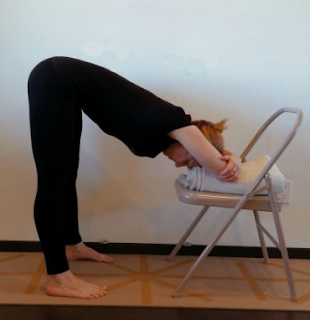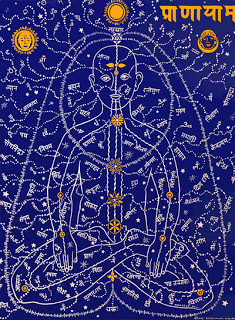building
strength & balancing July!
The
Intro= Set your intention & clear your
mind
Take
Mountain pose at the front of your mat- set your feet up, heels under the hips toes slightly
turned in, this aligns the outer edges of your feet to parallel position.
Inhaling
and exhaling reach your arms out to come up, reaching your shoulders away from
the ears.
The
Warm Up= Mountain Pose + Utthita Hasta in Tadasana/Mountain Pose 3- 5
times + Sun Breaths + Right and Left Lunges + Uttanasana + Ardha Uttanasana +
Plank +Childs Pose+ A.M.S+ Utkatasana
Start
with Mountain Pose moving through Utthita Hasta in Mountain
Pose 3-5 times (Taking
note of counter actions.)
Add
Sun Breath 3 - 5 times (Mountain pose- inhale Utthita Hasta extended up-ward in Mountain Pose, ehale fold forward to a flat back inhale lengthen, echale fold to Uttanasana)
Inahle Ardha Uttanasana, bend the knees and look forward + Exhale Right Lunge, inhale step forward, exhale left lunge + Uttanansa + 2-5 times
Add
Plank, step or jump through lunge to plank (hold) release knees down gently for Childs
Pose, bring the knees slihjtly wider than hip distance, toes to touch, sit back on the heelswalk the sline forward and the arms to a comfortable width (let gravity release the weight of the body on the legs if uncomfortable come out)
3- 5 breaths
Come
to Table Top for
core work right hand extends, left leg hold 3-5 breaths
Switch
sides ( this
is also preparing the arms and hands for down dog)
take
Down Dog- Adho Mukha Savasana (breathe) let the weight move into the heels let the
calf muscles release, hips up and back
Inhale
lifting Right leg up slightly for Ti-Pod Down dog- with the focus on evenly
distributing the weight in the arms)
Switch
sides Bend the knees look forward step or jump the feet between the hands.
Take
Chair Pose- Utkatasana hold breath exhale straighten to Mountain Pose
Utthita
Hasta in Moutain
Exhale
Fold to Uttanasana
Inhale take
Ardha Uttanasana
Exhale
Right leg
extends back for Low Lounge- exhale the back heel down, setting up the base,
Inhale
hands to the hips weight in the front heel, knee in line with the second and
third toe- take
The Vinyasa standing sequence=
Warrior 1 + Utthita Parsvotonasana + Warrior 2
Directions:
Warrior
1 on the
right side, push the back heel straight. Inhale the arms up and gently
gaze through the finger tips.
Exhale
the left hand to the left hip right fore arm to the right knee- inhale exhale
the left hand up and over the head
Utthita
Parsvotonasana
intense or extended side stretch
Warrior
2- reach the
right arm forward and the left arm back, bring the torso head and neck up, gaze
over the right middle finger, keep the weight in the heels and the big toe,
don't lose the base.
Breath
exhale to "pin- wheel" the hands the the block or the floor inside
the front leg! Switch sides
step
the back foot forward foot back and come to table top pose for inhaling cat
exhaling cow.
Right
foot forward for twists, switch sides
Seated
Vinyasana= Dandasana, Gomukasana, Baddha Konasana, Marichiyasana
Coming to a seated position bring the legs out in front of you, fold a blanket or mat to give your self 3-4 inches of a pad to sit on if this causes discomfort. This pose is Dandanasa.
lift the chest activate the abdominals, navel to spine. inhale bend the kness bring the right heel under the left leg and then the left foot over the right knee. follow with the arms*. release the bind in the arms and the legs. switch sides! Bring the feet together and the knees apart, interlock the hands bring them under the feet pushing the feet into the hands hands into the feet lift the chest and drop the chin slightly for BADDHA KONASANA. Release bring the legs in front flex the feet right foot over the left leg, inhale and twist to the right. Switch sides.
Prone
Sequence =
Bridge
Pose + baddha Konasana +Supta Pada Gustasana + Savasana
Come
onto your back, inhaling and exhaling the hips up- keeping the weight in the
arms and feet for Bridge pose, release one vertebrae at a time take Supta
Baddha Konasana bring your feet together release the knees to open the
groins. Repeat 2-5 times.
Supta
Pada Gustasana
Bend
the knees bring the right knee into the chest and take yoga toe lock or grab
the outer edge of the foot, straighten the let and the left leg inhale exhale
the right leg out and over to the right, let go. In hale exhale extensively
Inhale
the leg back up switch the hold to the left hand and inhale and exhale the leg
to the left. Switch sides.

 Inverting L-Shape
Inverting L-Shape




















